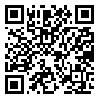Volume 6, Issue 1 (3-2021)
IJREE 2021, 6(1): 64-76 |
Back to browse issues page
Department of English Language, Faculty of Letters & Humanities, Shahrekord University
Abstract: (4486 Views)
In recent years, audiovisual translation (AVT) has become omnipresent in different parts of the world; however, dubbing humor restrictions may hamper the translation in that maintaining the humor in the target language (TL) requires a high level of knowledge. Although several studies have attempted to describe the distribution of translation strategies, few systematic attempts are made to analyze the employed AVT strategies in humor series. The present study analyzed the Persian humor expressions’ appropriacy and their translated versions in English through a qualitative study. To this aim, the dominant strategies used to render humor in the translated versions of 3 dubbed Iranian series (i.e., Shamsolemareh, Chimney, and Medical Building) were analyzed. Furthermore, the typologies of the employed audiovisual humor in the series were analyzed. Data analysis illustrated that clumsiness and parody were the most frequent humor typologies used in the series. The 3 strategies of omission, word-for-word translation, and free translation were the most frequent ones. In conclusion, the results indicated the failure to accommodate the Iranian series’ humorous level, preventing the target audience from appreciating humor. Findings can contribute to the improvement of the quality of humor translation.
References
1. Afsari, S., Abootorabi, E., & Moeinzadeh, S. N. (2018). An analysis of audiovisual subtitling translation focusing on wordplays from English into Persian in the Friends TV series. Journal of Language and Translation, 8(2), 1-10. http://ttlt.azad.ac.ir/article_543418.html
2. Antonini, R. (2007). SAT, BLT, spirit biscuits, and the third amendment: What italians make of cultural references in dubbed texts. In Y. Gambier, M. Shlesinger, & R. Stolze (Eds.), Doubts and directions in translation studies (pp. 153-167). Amsterdam, Netherlands: John Benjamins. [DOI:10.1075/btl.72.17ant]
3. Antonini, R., & Chiaro, D. (2009). The perception of dubbing by Italian audiences. In Audiovisual translation (pp. 97-114). London: Palgrave Macmillan. https://doi: 10.1057/9780230234581_8 [DOI:10.1057/9780230234581_8]
4. Baker, M. (2006). Translation a narrative account and conflict. London: Routledge. https://doi: 10.4324/9780203099919 [DOI:10.4324/9780203099919]
5. Balirano, G. (2013). The strange case of the big bang theory and its extraordinary Italian audiovisual translation: a multimodal corpus-based analysis. Perspectives, 21(4), 563-576. [DOI:10.1080/0907676X.2013.831922]
6. Berger, A. A. (1976). Laughing matter: A symposium: Anatomy of the joke. Journal of Communication, 26(3), 113-115. [DOI:10.1111/j.1460-2466.1976.tb01913.x]
7. Berger, A. A. (1993). An anatomy of humor. New Brunswick, NJ: Transaction Publishers.
8. Buijzen, M., & Valkenberg, P. M. (2004). Developing typology of humor in audiovisual media. Media Psychology, 6(2), 147-167. doi: 10.1207/s1532785xmep0602_2 [DOI:10.1207/s1532785xmep0602_2]
9. Camilli, L. P. (2019). A case study of the audiovisual translation of wordplay. Journal of Audiovisual Translation, 2(1), 75-103. https://doi.org /10.47476/jat.v2i1.24 [DOI:10.47476/jat.v2i1.24]
10. Cintas, J. D. (2009). New trends in audiovisual translation. London: Cromwell Press Group Ltd. [DOI:10.21832/9781847691552]
11. Davis, E. E. (2003). A golbin or a dirty nose? The Translator, 9(1), 65-100. [DOI:10.1080/13556509.2003.10799146]
12. Foot, H. (2017). Humor and laughter: Theory, research, and applications. New York: Routledge.
13. Inggs, J., & Meintjes, L. (2009). Translation studies in Africa. Bloomsbury Publishing. https://www.bloomsbury.com/us/translation-studies-in-africa-9781847061775/
14. Jankowska, A. (2009). Translating humor in dubbing and subtitling. Translation Journal, 13(2), 134-148. https://translationjournal.net/journal/48humor.htm
15. Khakshour Forutan, M., & Modarresi, G. (2018). Translation of cultural taboos in Hollywood movies in professional dubbing and nonprofessional subtitling. Journal of Intercultural Communication Research, 47(6), 454-473. [DOI:10.1080/17475759.2018.1480516]
16. Keshavarz, M. H., & Alimadadi Zonoozi, L. (2011). Manipulation of ideology in translation of political texts: A critical discourse analysis perspective. Journal of Language and Translation, 2(1), 1-12. http://ttlt.azad.ac.ir/article_529069.html
17. Khoshsaligheh, M., Ameri, S., & Mehdizadkhani, M. (2018). A sociocultural study of taboo rendition in Persian fansubbing: An issue of resistance. Language and Intercultural Communication, 18(6), 663-680. [DOI:10.1080/14708477.2017.1377211]
18. Koestler, A. (1993). Humor and wit. In R. McHenry (Ed.), Encyclopedia Britannica (pp. 684-685). Chicago: Encyclopedia Britannica, Inc.
19. Martínez, X. (2004). Film dubbing, its process, and translation. In P. Orero (Ed), Topics in audiovisual translation (pp. 3-9). Amsterdam: John Benjamins Publishing Company. [DOI:10.1075/btl.56.03mar]
20. Martínez-Sierra, J. J. (2008). Humor y traducción. Los Simpson cruzan la frontera. The Journal of Specialized Translation, 11, 252-271.
21. Martínez-Sierra, J. J. (2010). Building bridges between cultural studies and translation studies: With reference to the audiovisual field. Journal of Universal Language, 11(1), 115-136. doi: 10.22425/jul.2010.11.1.115 [DOI:10.22425/jul.2010.11.1.115]
22. Martínez-Sierra, J. J. (2014). Dubbing or subtitling humor: Does it really make any difference? In L. de Rosa et al. (Eds.), Translating humor in audiovisual texts (pp. 311-332). Oxford: Peter Lang. [DOI:10.3726/978-3-0351-0740-1]
23. Meyer, J. C. (2000). Humor as a double-edged sword: Four functions of humor in communication. Communication Theory, 10(3), 310-331. [DOI:10.1111/j.1468-2885.2000.tb00194.x]
24. Munday, J. (2001). Introducing translation studies. Theories and applications. London, New York: Routledge.
25. O'Connell, E. (2000). The role of screen translation: A response. Current Issues in Language & Society, 7(2), 169-174. [DOI:10.1080/13520520009615578]
26. Perego, E. (2012). Eye tracking in audiovisual translation. Rome: Aracne.
27. Perego, E., Del Missier, F., & Stragà, M. (2018). Dubbing vs. subtitling: Complexity matters. Target: International Journal of Translation Studies, 30(1), 137-157. [DOI:10.1075/target.16083.per]
28. Pym, A. (2010). Exploring translation theories. London and New York: Routledge. [DOI:10.4324/9780203869291]
29. Raphaelson-West, D. (1989). On the feasibility and strategies of translating humor. Meta: Translators' Journal, 34(1), 128-141. [DOI:10.7202/003913ar]
30. Talaván, N., & Costal, T. (2017). iDub-The potential of intralingual dubbing in foreign language learning: How to assess the task. Language Value, 9(1), 62-88. doi: 10.6035/LanguageV.2017.9.4 [DOI:10.6035/LanguageV.2017.9.4]
31. Vandaele, J. (2002). Introduction: (re) constructing humor: meanings and means. The Translator, 8(2), 149-172. https://biblio.ugent.be/publication/8564080 [DOI:10.1080/13556509.2002.10799130]
32. Wang, F. (2014). An approach to domestication and foreignization from the angle of cultural factors translation. Theory and Practice in Language Studies, 4(11), 2423-2427. [DOI:10.4304/tpls.4.11.2423-2427]
| Rights and permissions | |
 |
This work is licensed under a Creative Commons Attribution-NonCommercial 4.0 International License. |




